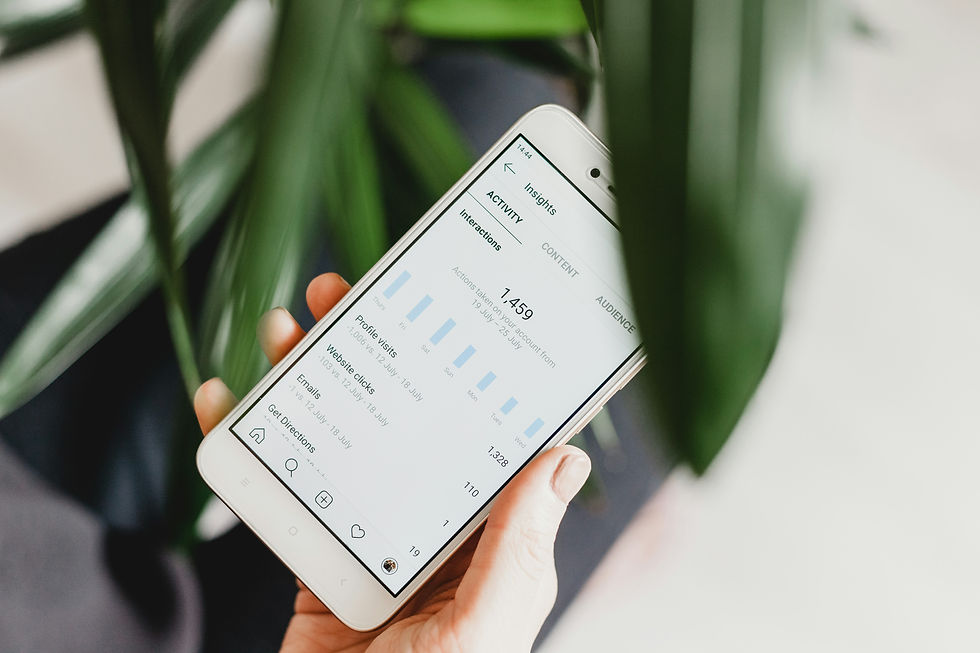Paid Ads That Drive Impact: A Practical Playbook
- Anjana Murali
- Aug 28
- 3 min read
Online advertising gives you three compounding advantages: precision targeting, fast feedback loops, and scalable learnings. The catch? You need a system that aligns media, creative, tracking, measurement and CRO. This article explores practical strategies to maximise the impact of your online paid advertising campaigns, helping you get the best return on your investment.
Online paid advertising offers businesses the ability to target specific audiences with precision. Unlike traditional advertising, digital platforms provide detailed data and analytics, allowing marketers to tailor their campaigns for maximum effectiveness.
Some key benefits include:
Targeted Reach: Advertisers can focus on demographics, interests, locations, and behaviors.
Measurable Results: Real-time tracking of clicks, impressions, and conversions.
Flexibility: Campaigns can be adjusted quickly based on performance.
Cost Control: Budgets can be set to suit any size, with options like pay-per-click (PPC) ensuring you only pay for results.
To harness these benefits, it’s essential to understand the platforms and strategies that work best for your business goals.

Crafting Effective Online Paid Advertising Campaigns
Creating a successful campaign involves several critical steps. Here’s a practical guide to help you build campaigns that deliver results:
1. Define Clear Objectives
Before launching ads, define success in business terms and connect it to a verifiable metric.
Common goals: Revenue, Customer acquisition, LTV, leads, qualified lead rate, approval/activation rate, Traffic.
Translate to media: CPA/CPL, CPC, cost per qualified action, cost per booked meeting, etc.
Write the success line first: e.g., “Acquire SME banking customers at ≤ AED X CAC with a 4–6 month payback.”
2. Know Your Audience
Platforms perform best when you show them who matters most.
First-party lists: CRM lists, high-value purchasers, churn-winbacks, approval-ready segments.
Smart exclusions: Existing customers, recent converters, irrelevant geos/verticals.
Recency rules: 7/14/30-day windows to keep spend focused.
Value rules: Send conversion values (AOV, lead score, predicted LTV) so algorithms optimise toward quality, not just volume.
3. Creative is the new targeting
With broader targeting, creative and offer do the heavy lifting. Your ads should be clear, concise, and visually appealing. Use the ABCD method: grab Attention fast, make your Brand obvious early, build a Connection by addressing the customer’s problem with proof, and give clear Direction. Additionally, follow the below:
Modular assets: Build a “creative matrix” that works for your industry and account structure: 3–5 hooks × 2–3 formats (static, short video, carousel, collection).
Proof over claims: Use numbers, case studies, testimonials, screenshots, or demos.
Velocity: Test hooks bi-weekly, rotate winners, retire fatigue early.
4. Use the right channel playbook
Pick your channel by intent and data. For example, run Google Search when there’s existing demand (and competitors on the query), and use Performance Max only if you’re e-commerce with strong product feeds and creatives to scale beyond search. Choose LinkedIn to reach business professionals by title, seniority and industry, Meta to create and amplify demand with broad targeting and retargeting, and YouTube/Demand Gen to educate and prime new demand you’ll later capture via search.
5. Landing pages that convert
Ensure strict message to match between ad and landing page with a single primary CTA. Reduce friction through multi-step, autofill-enabled, progressively profiled forms; establish a trust architecture (quantified proof, accreditations, FAQs); meet Core Web Vitals (mobile LCP < 2s); and orchestrate post-click follow-up with immediate confirmations, SLA-based callbacks, calendar booking, and CRM tasking/lead scoring via email/SMS/WhatsApp.
6. Measurement that allows you to optimsie for better performance
Set up once, benefit forever.
Server-side GTM/CAPI to improve signal reliability.
GA4 event map aligned to funnel stages (view → engage → MQL/SQL → revenue).
UTMs & naming conventions for clean analysis.
Single source of truth: Data warehouse (e.g., BigQuery) → BI (Looker Studio/Power BI/Tableau).
QA & governance: Pre-launch checklists, change logs, and weekly audits.
6. Test, measure, and refine
Run a weekly loop where you test one variable at a time (hook, offer, format, audience, bidding) with pre-defined stop rules, judge success beyond CPA (qualified, meeting, approval/activation, revenue, payback), prove incrementality with brand-search lift and geo/time holdouts, and reallocate budgets every seven days.

Taking the Next Step with Paid Advertising
To truly maximise your impact, consider partnering with experts who specialise in paid advertising. We can help you design, implement, and optimise campaigns tailored to your business needs.
Investing in professional management ensures your campaigns are data-driven, cost-effective, and aligned with your goals. Whether you’re new to online advertising or looking to improve existing efforts, expert guidance can make a significant difference.
By applying these strategies and continuously refining your approach, you can unlock the full potential of online paid advertising and drive meaningful growth for your business.




Comments